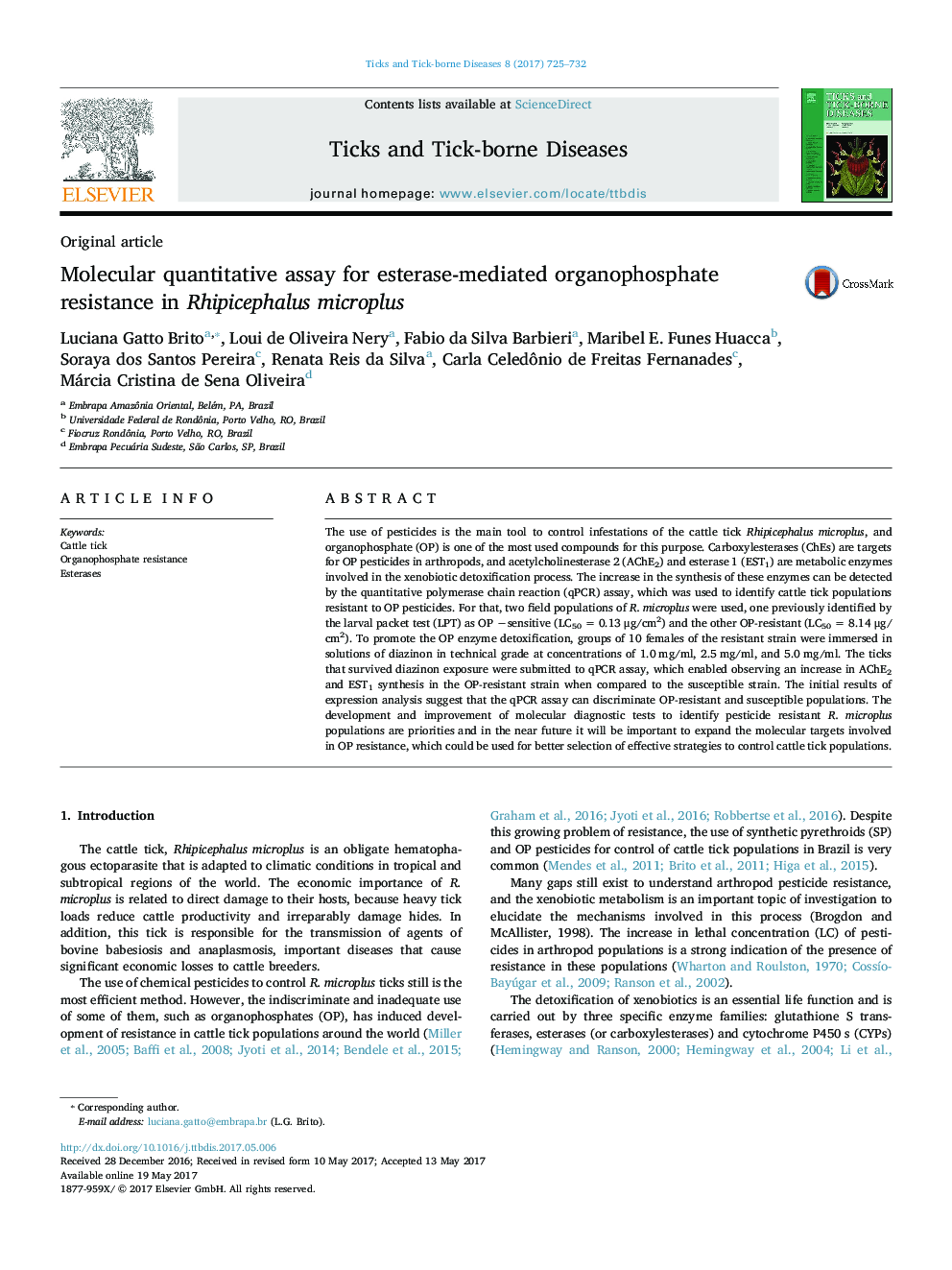| Article ID | Journal | Published Year | Pages | File Type |
|---|---|---|---|---|
| 5546331 | Ticks and Tick-borne Diseases | 2017 | 8 Pages |
The use of pesticides is the main tool to control infestations of the cattle tick Rhipicephalus microplus, and organophosphate (OP) is one of the most used compounds for this purpose. Carboxylesterases (ChEs) are targets for OP pesticides in arthropods, and acetylcholinesterase 2 (AChE2) and esterase 1 (EST1) are metabolic enzymes involved in the xenobiotic detoxification process. The increase in the synthesis of these enzymes can be detected by the quantitative polymerase chain reaction (qPCR) assay, which was used to identify cattle tick populations resistant to OP pesticides. For that, two field populations of R. microplus were used, one previously identified by the larval packet test (LPT) as OP âsensitive (LC50 = 0.13 μg/cm2) and the other OP-resistant (LC50 = 8.14 μg/cm2). To promote the OP enzyme detoxification, groups of 10 females of the resistant strain were immersed in solutions of diazinon in technical grade at concentrations of 1.0 mg/ml, 2.5 mg/ml, and 5.0 mg/ml. The ticks that survived diazinon exposure were submitted to qPCR assay, which enabled observing an increase in AChE2 and EST1 synthesis in the OP-resistant strain when compared to the susceptible strain. The initial results of expression analysis suggest that the qPCR assay can discriminate OP-resistant and susceptible populations. The development and improvement of molecular diagnostic tests to identify pesticide resistant R. microplus populations are priorities and in the near future it will be important to expand the molecular targets involved in OP resistance, which could be used for better selection of effective strategies to control cattle tick populations.
